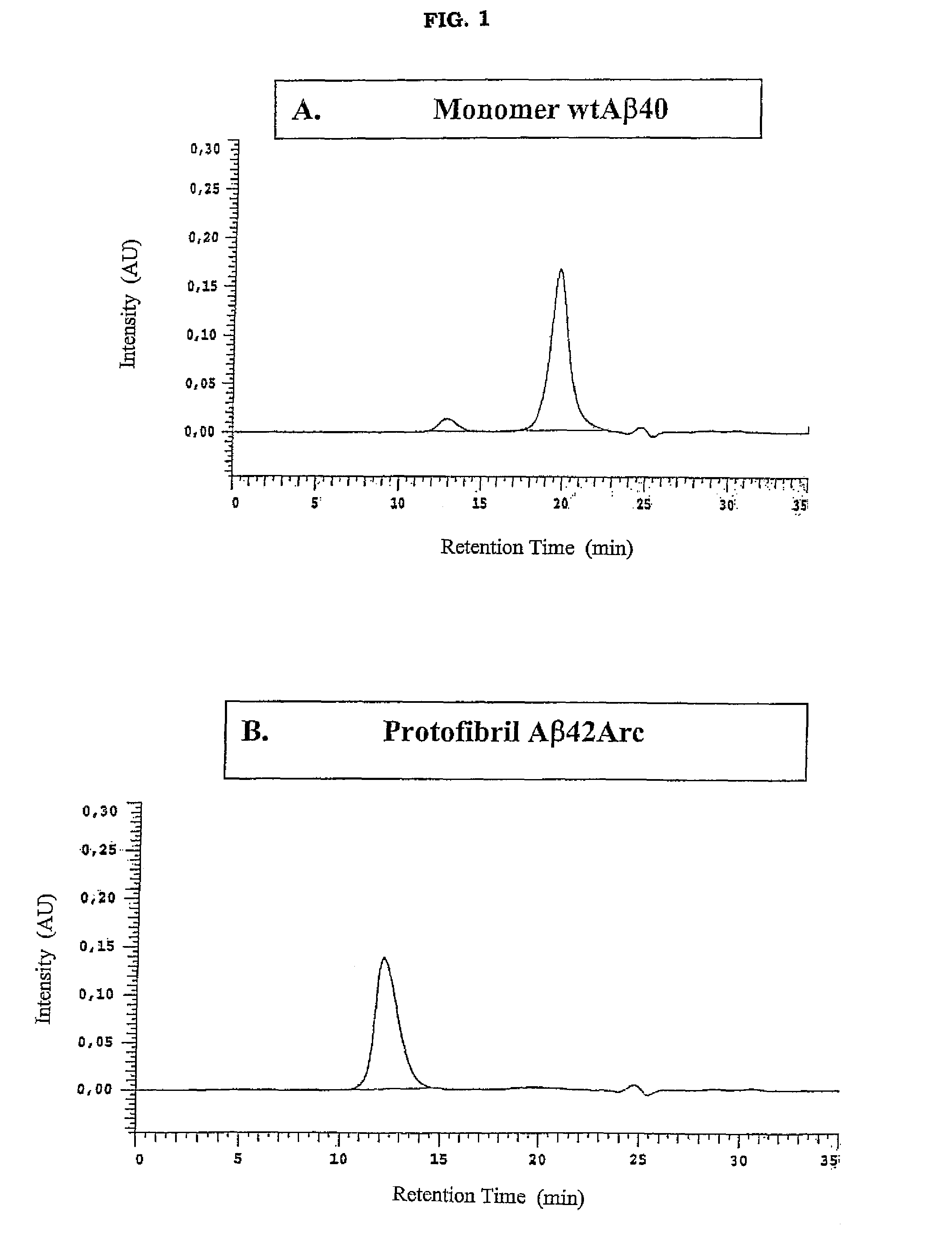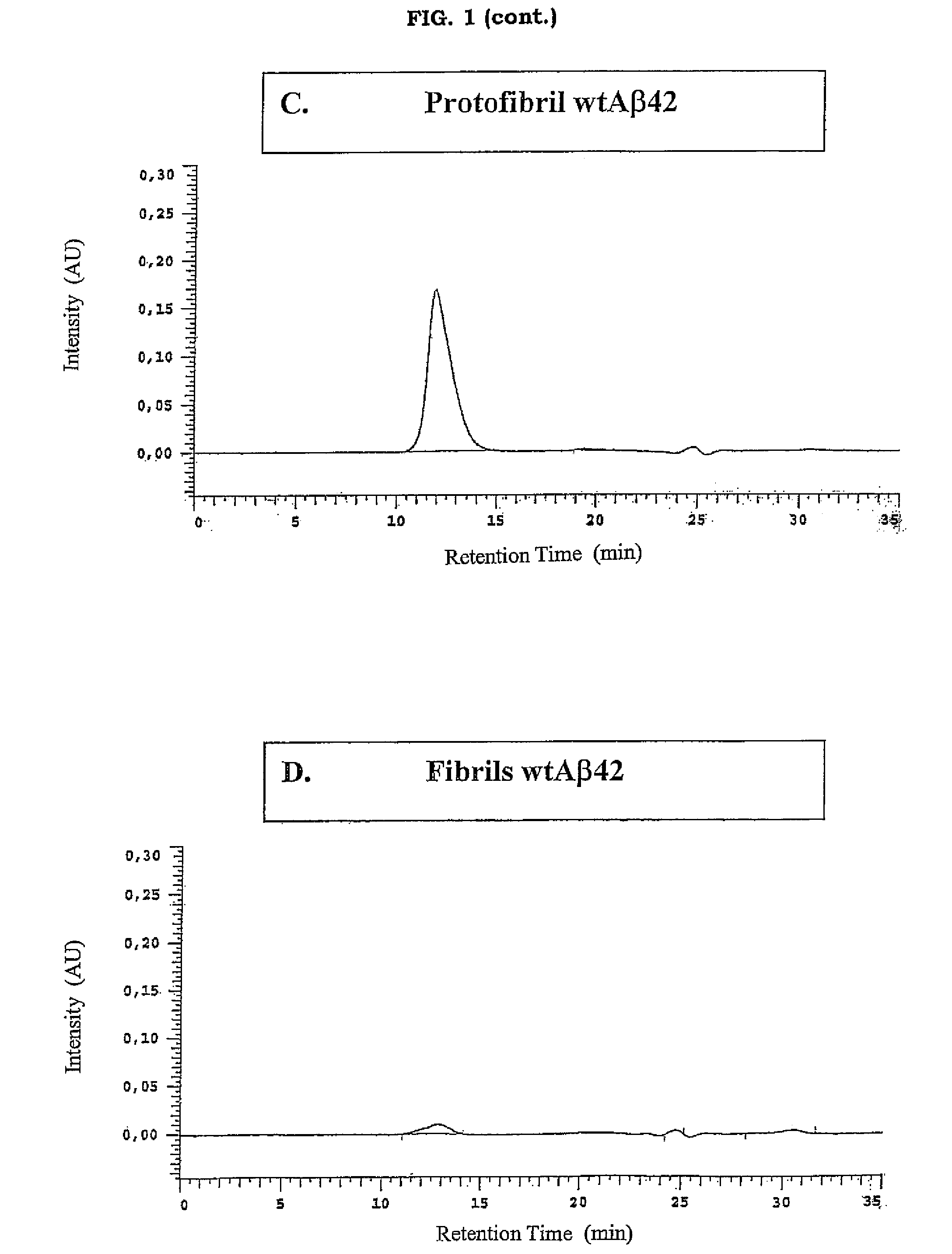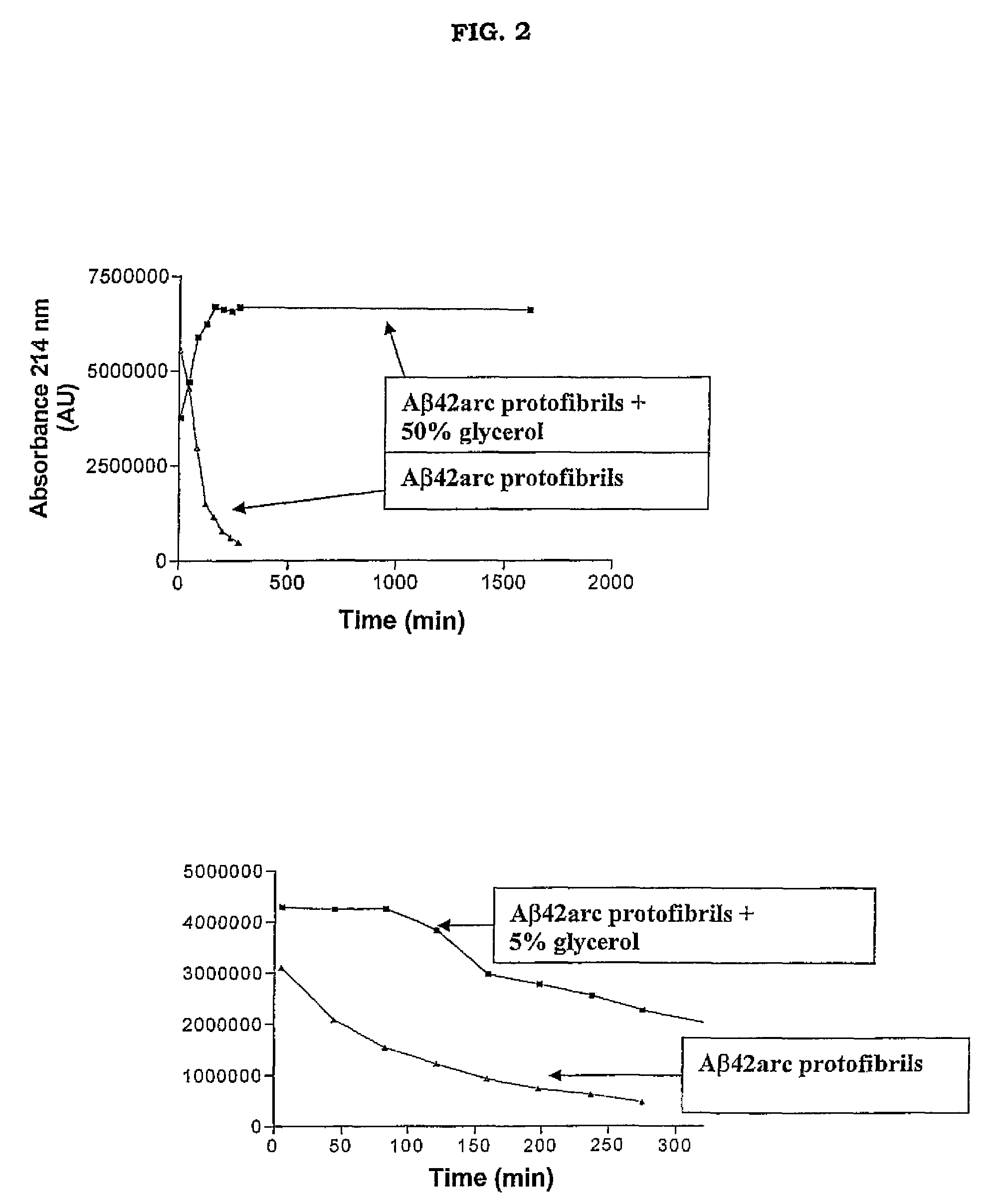Antibodies specific for soluble amyloid beta peptide protofibrils and uses thereof
a technology of amyloid beta peptide and antibodies, which is applied in the field of antibodies specific for soluble amyloid beta peptide protofibrils, can solve the problems of difficult clinical diagnosis of alzheimer's disease (ad)
- Summary
- Abstract
- Description
- Claims
- Application Information
AI Technical Summary
Benefits of technology
Problems solved by technology
Method used
Image
Examples
example 1
Synthesis of Human Amyloid Beta Peptide (Aβ) of Different Conformations
[0062]Synthetic human wild type or mutant forms of Aβ1-42 or Aβ1-40 peptides were purchased from Polypeptide Laboratories GmbH. The peptides had been synthesized by a standard solid phase peptide synthesis procedure. The peptides were subsequently purified with RP-HPLC to a purity in the range of 90-95%. Alternative vendors producing Aβ peptides with similar purity are possible to use as well.
Synthesis of Human Wild Type Aβ1-40 Monomers
[0063]A synthetic wtAβ31-40 peptide was dissolved in 1 volumes of 10 mM NaOH pH>10, and 1 volume of cold 2×PBS (pH 7-8) to a concentration of 50 uM. The wtAβ1-40 monomer preparation was centrifuged at 17.900×g at +4° C. for 5 minutes prior to analysis (FIG. 1).
Synthesis of Human Wild Type Aβ1-42 Protofibrils
[0064]A synthetic wtAβ1-42 peptide was dissolved in 9 volumes of 10 mM NaOH pH>10, vortexed for 2 minutes and diluted with 1 volume of 10×PBS (pH 7-8). The final peptide concent...
example 2
Protofibrils Specific Monoclonal Antibody Development
[0069]A standard procedure was used for monoclonal development. Mice were injected with wtAβ1-42 protofibril preparation. Alternatively, Aβ1-42Arc protofibrils could be used. Every wtAβ1-42 protofibril batch was assayed by SEC and Congo Red (binds β-sheet structures in proteins) before immunisation to ascertain protofibril purity and that the preparation contained β-sheet structure. The procedure used to immunise mice was a standard protocol involving s.c injections in the presence of Freund adjuvant. Each of six mice were immunized with 10 ug wtAβ1-42 protofibrils and subsequently boostered with 30 ug. The sample was mixed 1:1 with Freund complete adjuvant prior to the first injection. For subsequent 5 booster injections incomplete Freund adjuvant was used. Mouse n was not immunized (control). Mice were bleed and blood collected for antibody titer determinations (FIG. 3). Mice were given one more booster (30 ug) and then sacrific...
example 3
Screening for wtAβ1-42 Protofibril Specific Antibodies
[0070]An ELISA method was developed where by hybridom supernatants were screened for antibodies that bind Aβ1-42 protofibrils. Hybridom supernatant #258 showed high protofibril specificity (FIG. 3). The hybridom #258 was reseeded and screened again to ascertain a homogenous cell line. The monoclonal antibody that was produced from the #258 hybridom was defined as monoclonal antibody 258 (mAb258). Alternatively, screening (binding to Aβ protofibrils but not to Aβ monomers or fibrils) can be performed against an antibody phage display library, where the library has been made from RNA isolated from animals immunized with protofibril.
PUM
| Property | Measurement | Unit |
|---|---|---|
| molecular weights | aaaaa | aaaaa |
| concentration | aaaaa | aaaaa |
| temperature | aaaaa | aaaaa |
Abstract
Description
Claims
Application Information
 Login to View More
Login to View More - R&D
- Intellectual Property
- Life Sciences
- Materials
- Tech Scout
- Unparalleled Data Quality
- Higher Quality Content
- 60% Fewer Hallucinations
Browse by: Latest US Patents, China's latest patents, Technical Efficacy Thesaurus, Application Domain, Technology Topic, Popular Technical Reports.
© 2025 PatSnap. All rights reserved.Legal|Privacy policy|Modern Slavery Act Transparency Statement|Sitemap|About US| Contact US: help@patsnap.com



